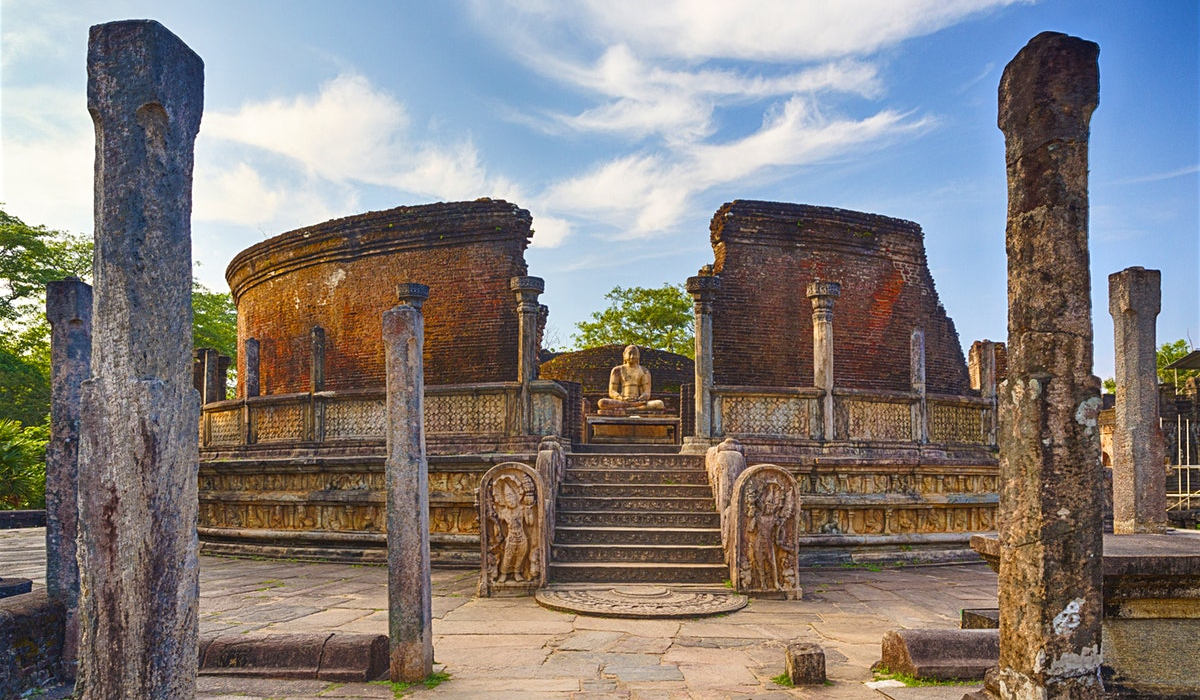
Polonnaruwa is the second sacred city in Sri Lanka. After plundering of Anuradhapura, from 1070 to 1293, Polonnaruwa was the capital of the island. But the monarchs used the young city as their residence from the VII century. The most important buildings were erected during the reign of King Parakramabahu I (Parakramabahu the Great, 1153-1186). Many buildings have survived pretty well so far. Having lost the status of the capital in 1293, the city was overgrown with jungle and was discovered by the British in the XIX century.
Established by King Vijay Bahu I in 1070 CE, Polonnaruwa is the second ancient capital of Sri Lanka. It was however under Parakramabahu I who ruled for most of 12th CE that this city flourished. Parakramabahu’s imprint can be seen all over the city including a very popular life-size image of him holding a plow in stone.
The city is located close to a large manmade lake called Parakrama Samudra. It is a huge lake even though you see only a part of it from the road. A lot of this lake is behind the hills. It had an excellent agricultural economy. And its water management systems are worth research. In folklore, they say in Polonnaruwa not a single drop of rainwater was wasted. He also started trading with other kingdoms. Most of what you see in this ancient city was built by Parakrambahu.

